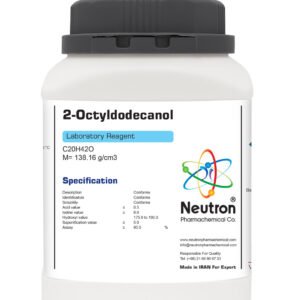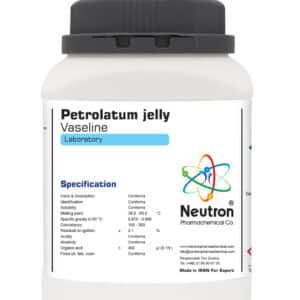تیتانیوم دی اکساید
| Formula | O2Ti |
| Chemical formula | TiO2 |
| Density | 3.9 g/cm3 (20°C) |
| Molar mass | 79.90 g/mol |
| Bulk density | ~ 850 kg/m3 |
| CAS number | 13463-67-7 |
| HS Code | 28230000 |
| EC number | 236-675-5 |
| Storage | Without limitation |
| SDS | available |
| RTECS | XR2275000 |
| S phrase | S 22 |
| Odour | oderless |
| Form | powder |
| Color | white |
| p H | 7.0(100g/l 20 °C) |
| Solubility in water | insoluble (20°C) |
| Boiling point | 2500 – 3000 °C |
| Melting point | 1855 °C |
| Assay | 98.0 – 100.5 | % | |
| Description | Conforms | ||
| Identification | Conforms | ||
| Heavy metals | ≤ | 0/002 | % |
| Water-soluble substances | ≤ | 0.25 | % |
| Acid-soluble substances | ≤ | 0/5 | % |
| Loss on drying | ≤ | 0/5 | % |
| Loss on ignition | ≤ | 1 | % |
Titanium Dioxide (TiO₂) is a naturally occurring inorganic compound widely used in pharmaceutical and laboratory applications due to its excellent opacity, brightness, and chemical stability. It is primarily utilized as a white pigment and opacifier in various formulations.
🏭⚗️ Production
Titanium dioxide is produced through the chloride or sulfate process, where titanium ore is processed to extract TiO₂. The resulting product is purified and refined to meet the high-quality standards required for pharmaceutical applications. The material is then processed into a fine white powder suitable for incorporation into various dosage forms.
🔬 Properties
TiO₂ is a white, odorless, and non-toxic powder with a high refractive index, making it an effective opacifier and pigment. It is chemically inert and stable under standard storage conditions, exhibiting resistance to UV degradation and oxidation. TiO₂ is insoluble in water and most solvents, which contributes to its stability in formulations.
🧪 Applications
In pharmaceutical formulations, titanium dioxide is commonly used as a white pigment in tablet coatings, capsules, and syrups, providing opacity and aesthetic appeal. It serves as an opacifier in sunscreen formulations, enhancing UV protection. Additionally, TiO₂ is utilized in laboratory settings as a reference standard for UV spectroscopy and as a component in photocatalytic studies due to its photocatalytic properties.
⚠️ Safety
Titanium dioxide is generally recognized as safe for use in pharmaceutical and laboratory applications. However, inhalation of fine TiO₂ particles may cause respiratory irritation. It is essential to handle TiO₂ with appropriate safety measures, including the use of personal protective equipment such as gloves and dust masks. The material should be stored in tightly sealed containers in a cool, dry place to maintain its stability and prevent contamination.




